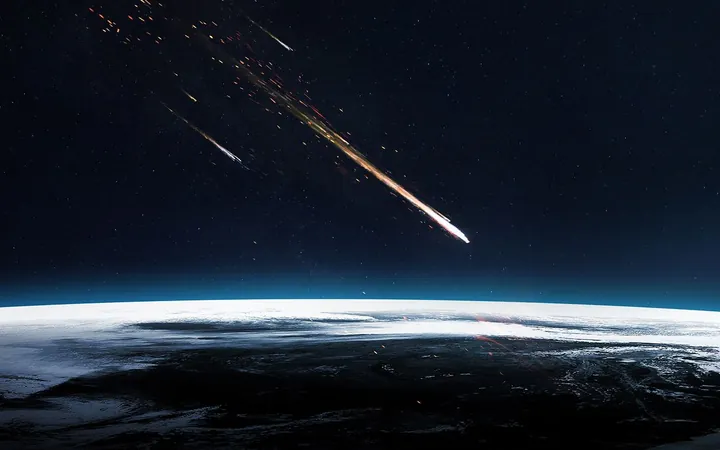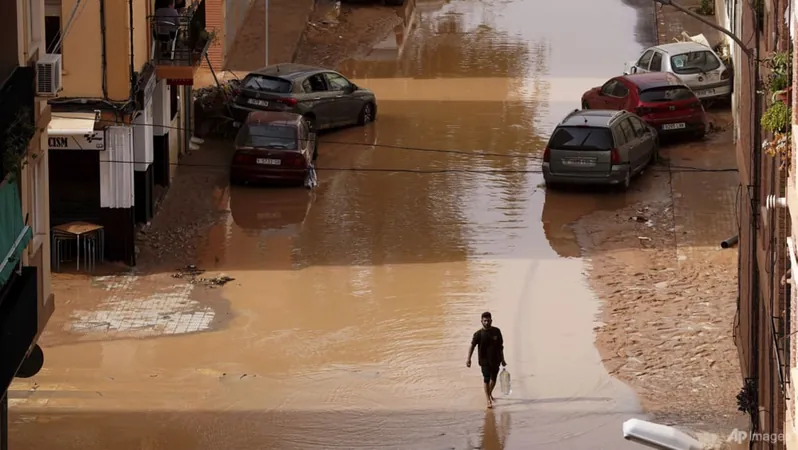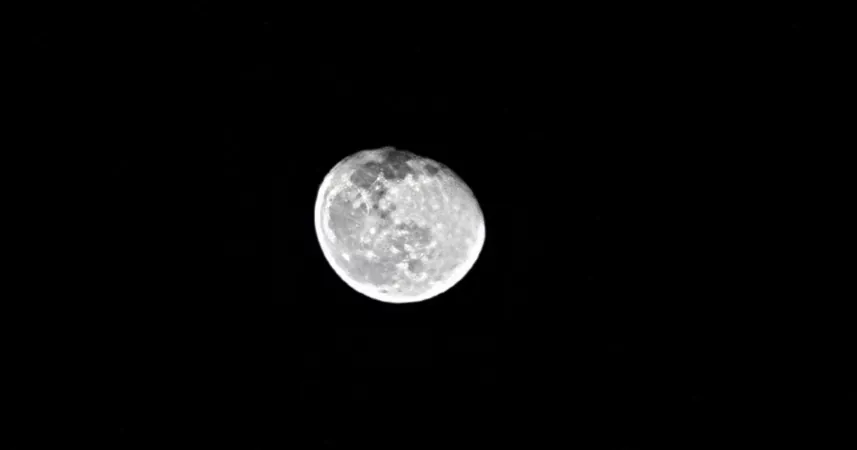
Meteor Showers: Nature’s Celestial Fireworks or a Spacecraft's Nightmare?
2024-11-02
Author: Wei
Meteor Showers: Nature’s Celestial Fireworks or a Spacecraft's Nightmare?
Meteor showers are often celebrated as spectacular displays of nature—akin to fireworks lighting up the night sky. However, lurking beneath this beauty is a significant threat, especially to spacecraft traversing the vastness of space.
Before these celestial particles, known as meteoroids, blaze through Earth's atmosphere, they are already posing a potential risk to satellites and crewed vehicles. Larger meteoroids have the capacity to breach the protective cabins of manned spacecraft. Even the smallest meteoroid impacts can wreak havoc on satellite components, potentially leading to short-circuits or system failures. A prime example of this risk was highlighted during the 1993 Perseids meteor shower when ESA’s Olympus 1 communications satellite began tumbling uncontrollably and ultimately had to be deactivated.
As a result, spacecraft are equipped with advanced shielding and redundant systems to mitigate the dangers posed by meteoroid impacts. However, the stakes rise significantly during meteor showers, compelling mission planners to take extra precautions by postponing spacewalks or positioning satellites to minimize exposure to the debris.
What Causes Meteor Showers?
Meteor showers occur when Earth travels through the debris field created by a comet's orbit. This natural phenomenon is broadly predictable, and NASA’s Meteoroid Environment Office diligently releases annual meteor shower forecasts to assist space mission planners in avoiding excessive risks.
However, accurately gauging the intensity of meteor showers can be challenging. Factors like particle density, size range, and the emergence of new showers add complexity to these predictions.
Assessing the Dangers of Meteor Showers
Althea Moorhead, a key researcher in this field, is dedicated to refining predictive models for meteor shower risks. Her work involves delineating what constitutes a genuinely hazardous shower—essentially, when the volume of energetic meteoroids reaches at least 5% of the normal background level.
More than 100 meteor showers have well-documented parameters, and Moorhead has utilized her criteria to identify the ones that pose the most substantial risks. Surprisingly, some of the most visually stunning meteor showers pose little to no danger to spacecraft. While these displays result from large, high-speed meteoroids, their limited numbers reduce the likelihood of impacts.
For instance, the Epsilon Geminids meteor shower—known for producing impressive fireballs in late October—presents almost no risk to satellites. In contrast, slower meteor showers comprised mainly of smaller particles can act like a barrage, significantly increasing hazards for orbiting spacecraft.
Among the most perilous meteor showers are the Geminids, peaking around mid-December, and the Perseids in mid-August. Moorhead also keeps a watchful eye on less consistent showers that may remain quiet but can swell dramatically during particular outbursts. The Leonids, for example, have a history of producing such surges when Earth crosses a denser stream of debris from the comet Tempel-Tuttle.
Final Thoughts
While it may seem unusual for space mission planners to monitor meteor showers like a weather forecast, advancements in predictive modeling are providing them with essential information. Understanding when celestial debris may fall through space allows professionals to prepare—a cosmic version of taking an umbrella out during a rainstorm!
Stay alert for the next time you gaze at the night sky, as those shooting stars might not just be stunningly beautiful; they could also be testaments to the careful preparations of those who navigate the intricate dance between Earth and the cosmos.





 Brasil (PT)
Brasil (PT)
 Canada (EN)
Canada (EN)
 Chile (ES)
Chile (ES)
 España (ES)
España (ES)
 France (FR)
France (FR)
 Hong Kong (EN)
Hong Kong (EN)
 Italia (IT)
Italia (IT)
 日本 (JA)
日本 (JA)
 Magyarország (HU)
Magyarország (HU)
 Norge (NO)
Norge (NO)
 Polska (PL)
Polska (PL)
 Schweiz (DE)
Schweiz (DE)
 Singapore (EN)
Singapore (EN)
 Sverige (SV)
Sverige (SV)
 Suomi (FI)
Suomi (FI)
 Türkiye (TR)
Türkiye (TR)